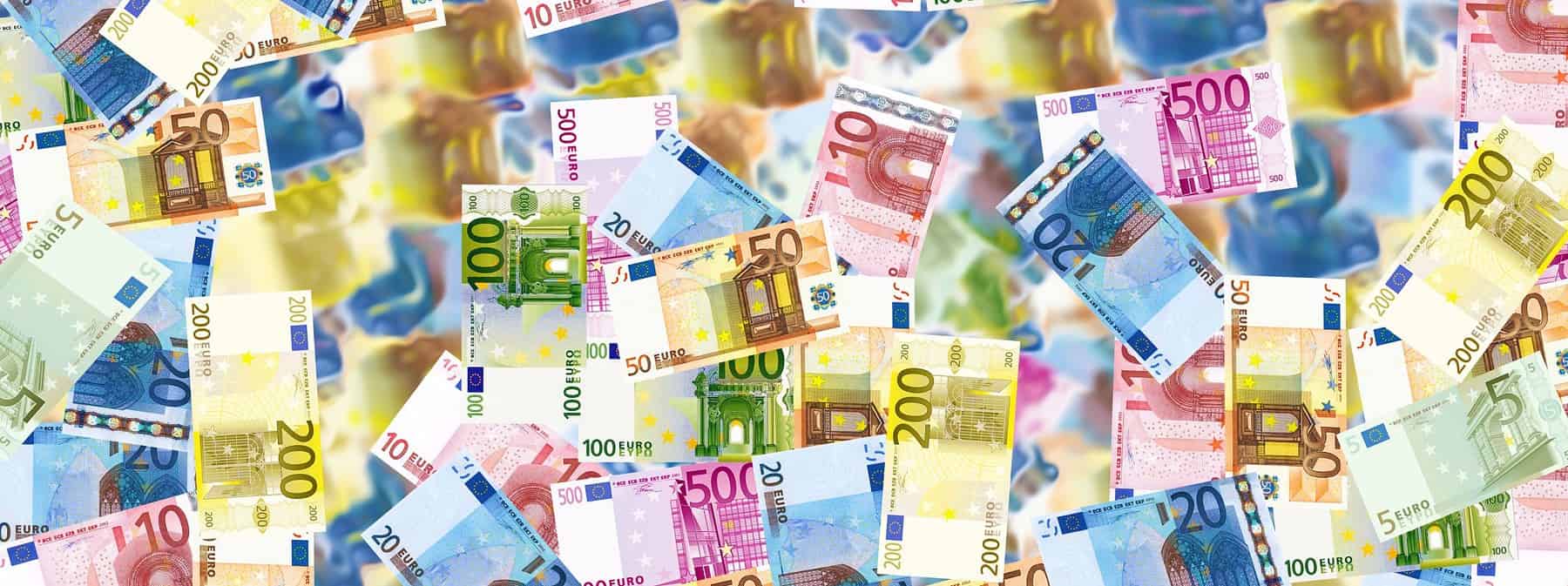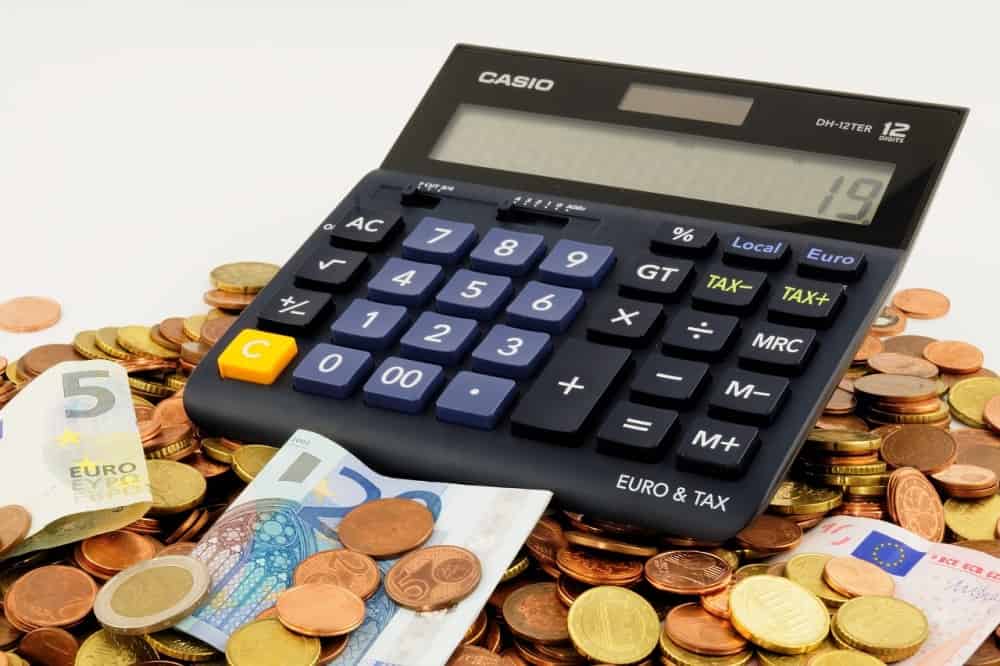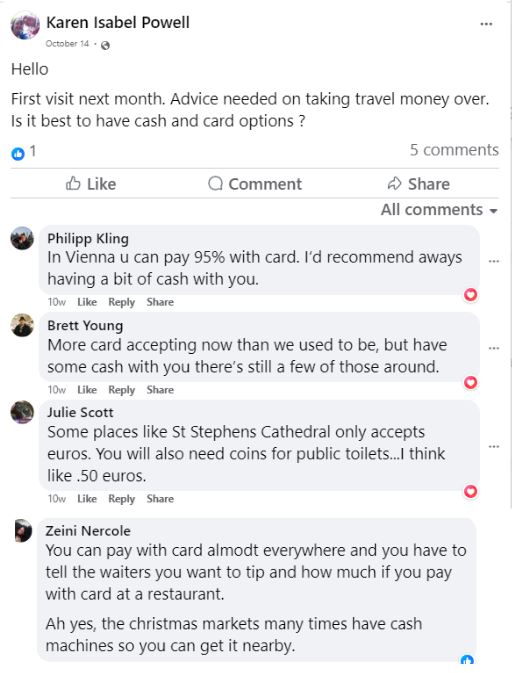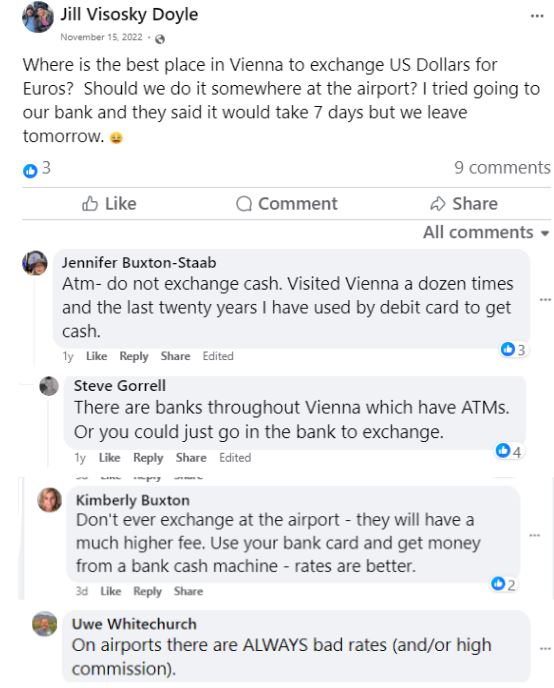As someone who has backpacked around Europe before and after the creation of the Euro, I am pleased to tell you Vienna now uses the euro - and boy, what a difference it makes!
Gone are the days of exchanging back and forth between currencies in many bordering countries. From Austrian schillings to French francs to Italian lira, and so on.
This post discusses using the euro in Austria, exchange rates, where to exchange cash, whether using credit cards is better than cash, and more.
The information is based on both my experience and input from our local tour guides living in Vienna.
At the bottom of this post, we include advice from tourists to Vienna who have encountered the same situations as you likely will.
- What is the Currency in Vienna
- Exchange Rates
- Exchanging Your Currency
- Withdrawing Cash From an ATM
- Cash vs. Credit Cards
- Tips From Locals & Travelers
What Currency is Used in Vienna and Austria
The official currency of Austria is the euro, which is the currency for almost all of the European Union nations.
If you’re coming to Vienna from another EU member who does use euros and has cash left over, you’re in luck! You don't have to exchange your money!
But if you’re coming from another part of the world, or EU nations that do not use the euro, you may need to exchange some currency. We go over that further down in this post.
For example, many people combine a trip to include Vienna with nearby cities of Budapest and Prague where the euro is not the currency. Read up on currency for Budapest and Prague.

Denomination of Euro Banknotes and Coins
- Euro banknotes come in these denominations: €5, €10, €20, €50, €100, €200, and €500.
- Euro coins come in these denominations: 1c, 2c, 5c, 10c, 20c, 50c, €1, and €2.
Something to note is that three denominations of euro coins in Austria have images of Austrian landmarks on one side and the common euro design on the other side.
The first time I noticed this was when I had just arrived and used a small bill to buy some water. The vendor gave me back a coin, and I thought, “This isn't a euro! I just got ripped off!”

Rest assured, these coins are euros despite looking different. You will have no problem using them in any country that takes euros.
Austrian-minuted euros have these images on the national side of the coins:
- €2 coin - Bertha von Suttner, Nobel Peace Prize winner in 1905
- €1 coin - Wolfgang Amadeus Mozart
- 50-cent coin - Secession building
- 20-cent coin - Belvedere Palace
- 10-cent coin - the spires of St Stephen’s Cathedral
By the way, you can read about the buildings on these coins here.
Several European Union countries use national images on one side of some coins and the common euro design on the other. It’s a lovely way to show national pride!
Keep your eyes open for these pretty coins in Germany, Ireland, Greece, Spain, France, Italy, the Netherlands, Portugal, Belgium, Croatia, and even Vatican City!
Exchange Rates for the Euro
Among the most common conversions into euros are from the U.S. dollar (USD), the Canadian dollar (CAD), the British pound (GBP), and the Australian dollar (AUD).
As of late December 2023, the following exchange rates apply for these currencies:
- $1 USD is equal to around €0.90 and $100 is equal to roughly €90.50
- £1 GBP is equal to about €1.15 and £100 is equal to approximately around €115.43
- $1 CAD is equal to around €0.68 and $100 is equal to about €68.39
- $1 AUD is equal to around €0.61 and $100 is equal to about €61.69
Remember that exchange rates change, even daily, due to factors related to financial market conditions.

Exchanging Your Currency
First things first. Avoid exchanging currency at airport kiosks. They offer terrible exchange rates and you will get fewer euros for your currency.
Plus, many add on a service fee. Sure it’s convenient but there are other ways to deal with currency and paying for items and services in Austria.
We strongly recommend that you exchange currency at a bank, rather than at a hotel, shop, or currency kiosk, to get the best rates.
Any place that handles currency exchange will have a large board displaying the rate they can offer you. Some are better than others.
Keep a daily eye on the standard exchange rate around the world by looking at this currency converter website, xe.com.
The most convenient and economical way to get euros is by using an ATM.
Withdrawing Cash From an ATM
It’s a whole lot easier to go to an ATM than it is to go to a bank branch which has set hours.
Before you depart from your home country, contact your bank to ask if there is a transaction fee when you withdraw euros at an ATM in Vienna, or anywhere overseas for that matter.
Next, use your debit card, and not a credit card at an ATM. Credit cards will start charging you interest the minute those euro notes are dispensed from the machine!
Private ATMs, like those owned by Euronet, may charge a fee to foreigners for your withdrawal.
There will be a warning though before you complete your transaction so you can cancel it if you like.
When asked what currency you want, choose euros for the best conversion rate.
Major banks don’t charge ATM fees to foreigners. The Austrian banks with the most number of branches and ATMs in Vienna are Erste Group Bank, UniCredit, and Raiffeisen.
Withdrawal limits for ATMs in Vienna (and Austria) are typically set to €400. Your bank may also have a limit. Know before you go!
Cash vs. Credit Cards
Now that we have covered the various ways to exchange currencies, we’d like to point out that you may not need hardly any cash at all!
Vienna is a cosmopolitan city and most stores, restaurants, hotels, and other establishments will accept your credit or debit card.
You could conceivably get through your entire visit without using any cash.

Using your credit/debit card
Before assuming that you can use your credit card, check the shop door or window to see if the appropriate credit card symbol is there. Or just ask!
Some establishments accept contactless payment now, like Google Pay or Apple Pay!
MasterCard and Visa are the most commonly used credit cards in Europe.
You may find that American Express is welcomed as well in many places. This is less so for Discover and Diners Club.
Before you depart, let your bank and credit card companies know that you will be traveling overseas.
When a foreign transaction appears on your accounts, they may be frozen as a security measure to protect you. What a hassle that will be!
When you will need cash
There are some circumstances when it will be necessary or useful to have some cash handy.
- You must have cash to enter St. Stephen's Cathedral, a popular tourist attraction.
- Nearly all merchants at Vienna’s famed Christmas Markets take cash only.
- To use many of the city's public bathrooms, you will need a 50-cent coin.
- Coins may be needed to use museum lockers.
- Small local shops will prefer cash, especially for small purchases, like a bottle of water.
- Buying a snack from a food kiosk or small souvenir or trinket.
- Cash tips are generally necessary for tour guides and hotel maids.
Given the few times you will need cash, you won't need to get euros before you depart for Vienna. You can exchange currency there.
And you certainly don't need a lot of cash! Maybe between €50, or at most €100 at most.
It’s never fun to have leftover cash to have to exchange back into your home country’s currency, with the potential to lose a bit in the process.
Currency Tips From Locals and Travelers
You don't have to rely on just us to tell you how to handle currency issues when there are loads of locals and tourists who also have first-hand knowledge.
Here are a few nuggets of wisdom on a few topics covered above from members of the Vienna Travel Tips Facebook Group.
Cash vs. credit card

Exchanging Currency





